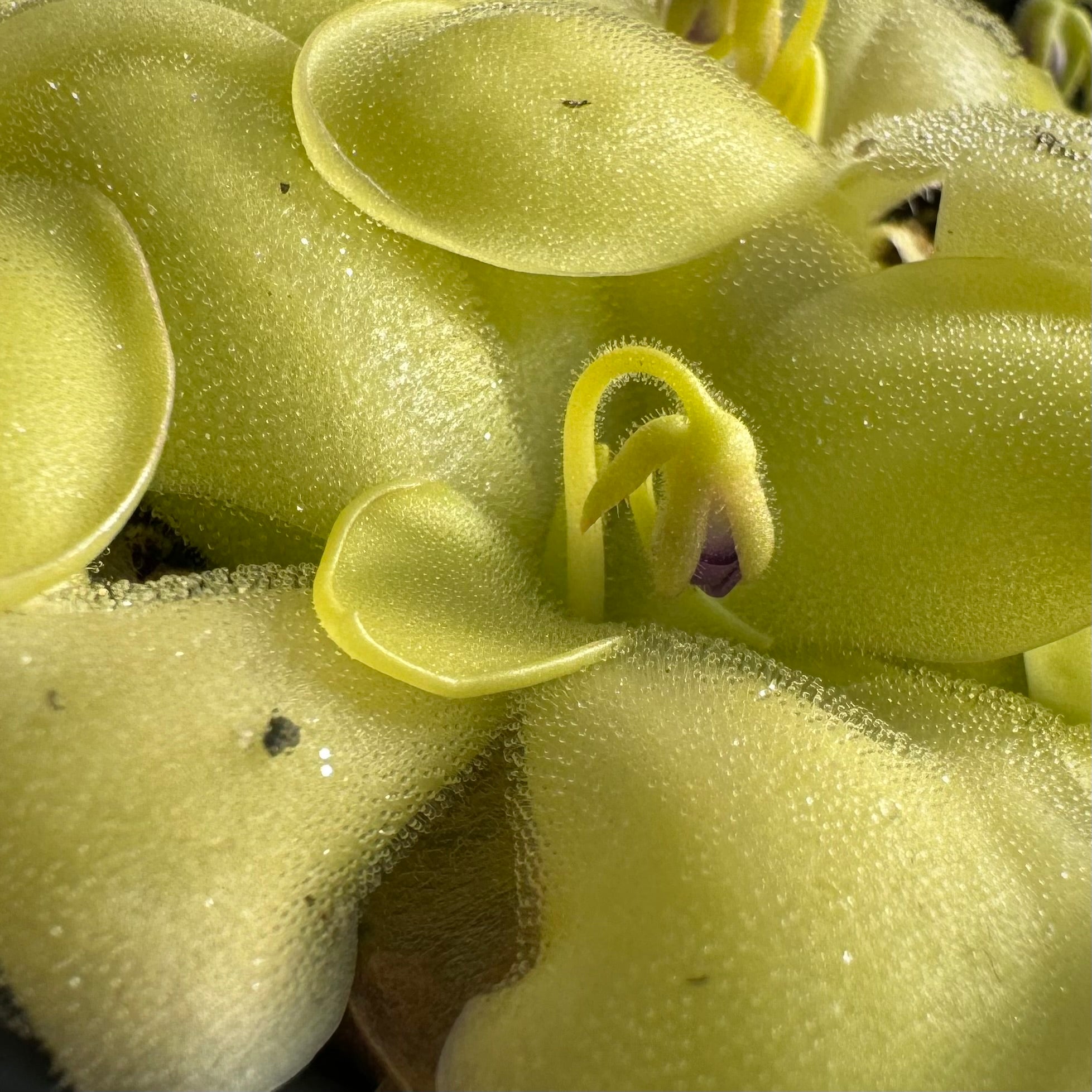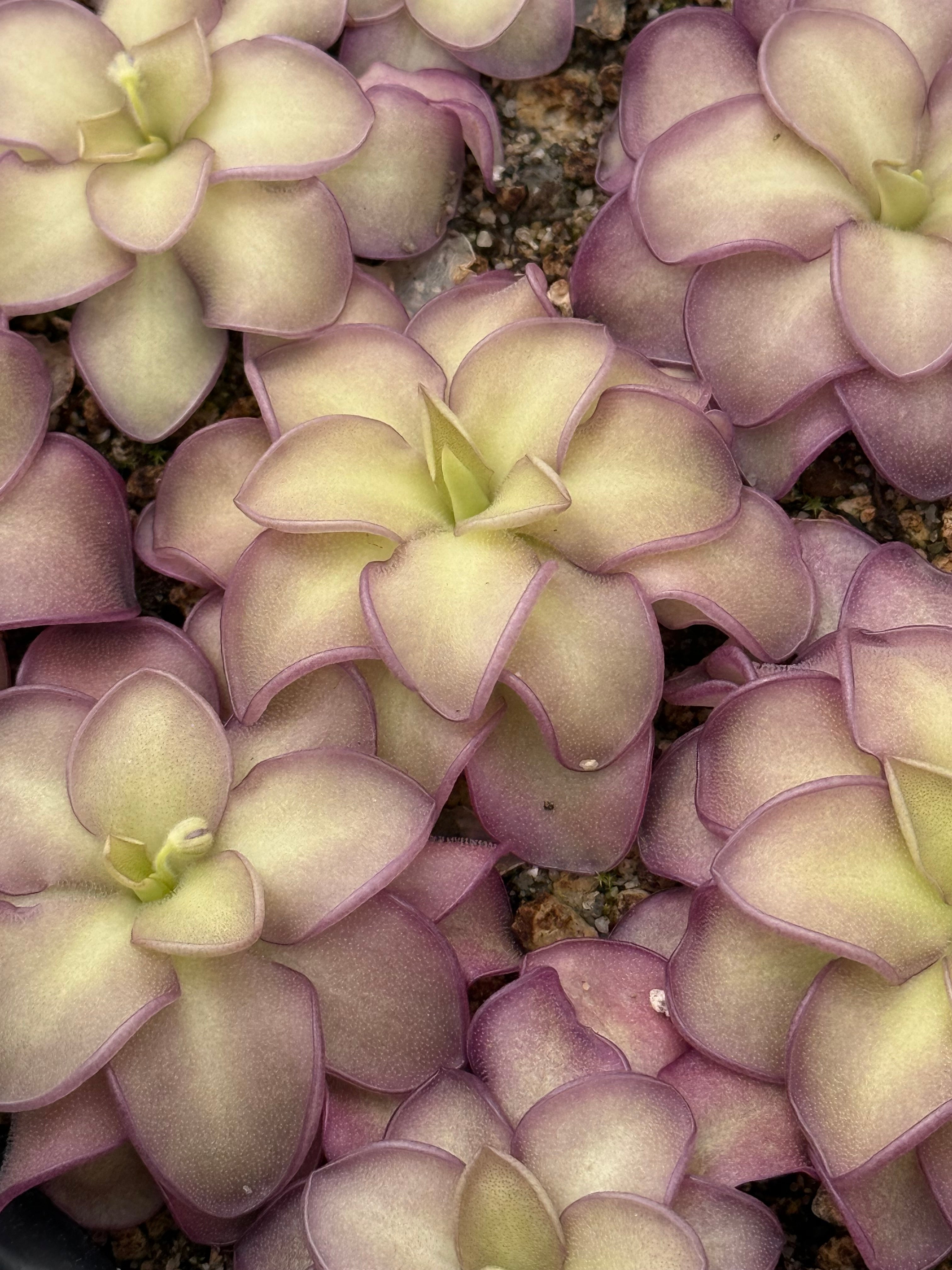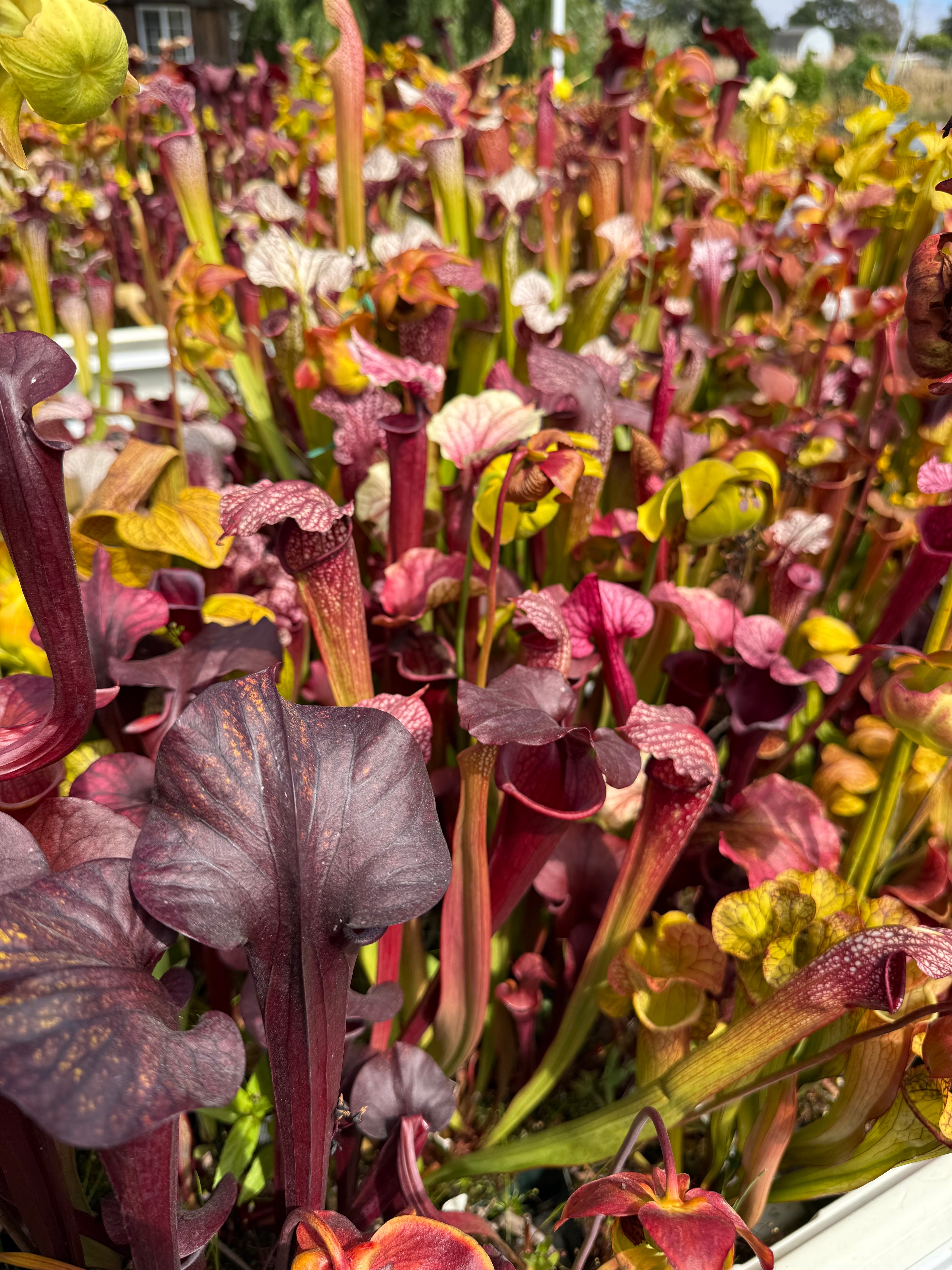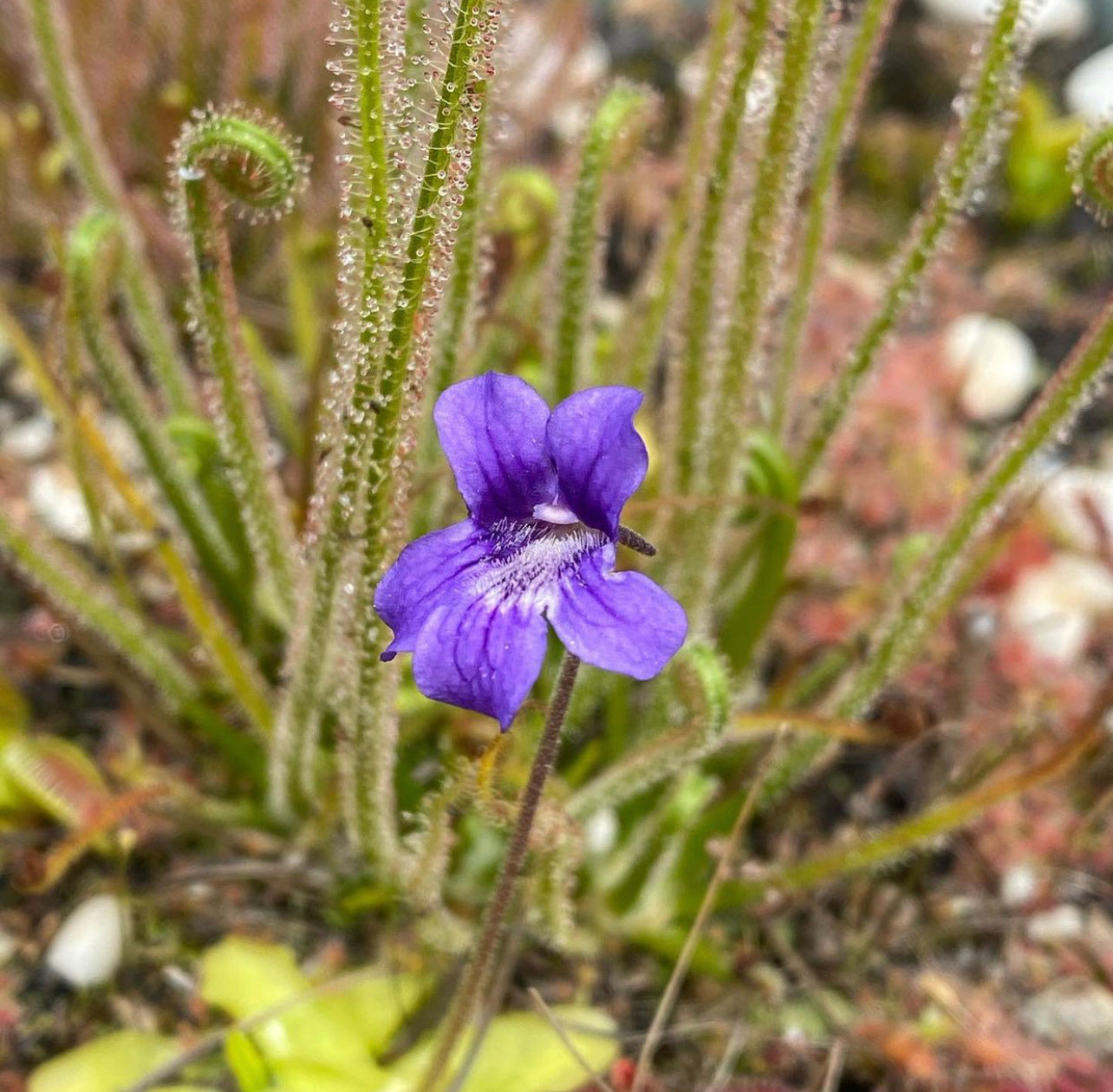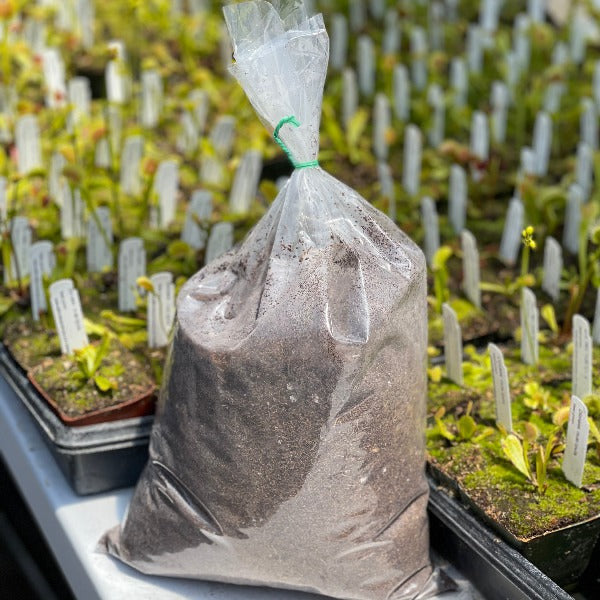Seed Sowing Tips
Seed Storage:
Store seeds in a dry, sealed plastic bag in a refrigerator until it's time to sow them. Germination rates decrease with time, but properly stored seeds may last quite a while. Most Drosera, Drosophyllum, and Byblis seeds last for many years, even decades. Sarracenia and Darlingtonia seeds can be stored for at least a few years. Pinguicula and Utricularia seem to have a relatively shorter shelf life. Nepenthes seeds do not store well and should be sown as quickly as possible.
What is Stratification?
The seeds of most temperate carnivores require a period of being kept damp and cold in order to germinate. If you live where winters are relatively mild, sow these seeds outdoors in late winter, so that they experience about a month of cold nights from 20-40 F. Keep protected from the rain. If this isn’t possible where you live, sow the seeds and put the entire pot into the fridge for 4 weeks. Remove from the fridge and keep in a warmer spot with bright light to begin germination. Keep soil wet. If space is an issue, about a month before the spring, take the seeds out of the paper envelope and sprinkle into another bag with a few strands of damp long fibered sphagnum moss. Sow in spring when night temps are above freezing.
Covering Seeds:
High humidity and constantly damp media is essential to good germination. Covering the seeds with a translucent dome or by placing the pot in a plastic bag often helps with this. This will also protect them from rain. Make sure there is some ventilation to avoid fungus and to let some heat out. Place your covered seeds in bright indirect light. Avoid long periods of direct sun while covered as this may cook your little seedlings.
Venus Flytraps (Dionaea):
Sow seeds in the late winter to early summer outdoors in a bright spot, sheltered from hot afternoon sun. Keep wet. A cover may help this. Sprinkle the seeds on top of a mix of 4 parts peat to 1 part sand or 50/50 peat and washed sand. Do not bury. Use a 4-5 inch pot for each seed pack. Stratification may increase germination. Indoors: They may be sown at anytime in a terrarium as described below for highland Nepenthes.
American Pitcher Plants and Cobra Plants (Sarracenia & Darlingtonia):
Sow these the same way as Venus Flytraps except these will need stratification first. Seeds will usually start to germinate in 6-8 weeks after stratification ends. Sometimes, some or all of the seeds won’t germinate until the following year.
Sundews (Drosera):
Temperate: As for Sarracenia. Examples: filiformis, intermedia, anglica, rotundifolia.
Subtropical: As for flytraps. Examples: South African rosetted sundews, Brazilian sundews
Winter Growing: These can be challenging to germinate. In Western Australia or South Africa, where they grow, germination is often tied to wildfires. Several things can be done to simulate these fires. Seeds can be soaked in Gibberellic acid for 24 hours before sowing. You can sprinkle with diluted liquid smoke. Some people leave the seeds somewhere hot over the summer. Allen Lowrie recommends sowing the seeds and then smoking the pots in a BBQ by burning peat moss. After any or all of these treatments, sow them in the fall on 2 parts sand to 1 part peat. Germination can take several months to years. Examples: tuberous Drosera, cistiflora, pauciflora, trinervia, alba, afra
Tropical: As for Lowland Nepenthes. Examples: burmanni, intermedia ‘cuba’, madagascariensis, petiolaris complex.
Rainbow Plants (Byblis):
As for tropical sundews. Smoke treatments will often increase germination.
Dewy Pines (Drosophyllum):
Scarification helps these seeds to germinate more quickly. We do this by holding each seed with forceps and then gently rubbing the side of the seed on a damp whetstone. Do this until you just start to see a little white spot. Then soak for 24 hours in water. Sprinkle the seeds on top of a mix of equal parts peat, sand, perlite, sand, and some lava if you have it. Cover. They quickly form a long tap root, so transplant soon after they sprout.
Butterworts (Pinguicula):
For Mexican Pinguicula, sprinkle the tiny seeds on the dewy pine mix and sow like Nepenthes or as for subtropical Drosera. Temperate Pinguicula as for temperate sundews.
Tropical Pitcher Plants (Nepenthes):
These seeds are best sown in a terrarium under T-5 fluorescent lights with a 14 hour photo period. Keep the light about 18” above the plants and the tank well ventilated to avoid overheating. Warm temps from 75-80 F will hasten and increase germination. Highland Nepenthes need cooler nights to flourish. Sprinkle the seeds on top of a New Zealand sphagnum moss based mix with a little finely chopped long fibered sphagnum moss on top. Keep constantly moist.
MaxSea Fertilizer:
Mist seedlings shortly after germination at 1/4 tsp per gallon. A monthly foliar (leaf only) feed will greatly speed up growth. Do not fertilize too often as this encourages moss and algae to overtake the seedlings.
Share


